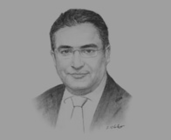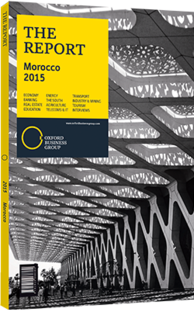Imad Barrakad, President, Société Marocaine d’Ingénierie Touristique: Interview

Interview: Imad Barrakad
In terms of infrastructure, what do you see as the priority investments for the tourism sector?
IMAD BARRAKAD: In order to be among the top-20 tourism destinations worldwide, Morocco has developed the Vision 2020 strategy, which focuses on two main axes: investment and product development. In the next 10 years, the kingdom wants to progressively develop six new destinations to further enhance growth in the two established international hubs, Marrakech and Agadir. These centres will serve as anchors for more expansive territorial planning that focuses on five major development axes, in terms of infrastructure. These are the enrichment of the cultural offering; the development of projects along the coast – both on the Atlantic and Mediterranean – through the completion of the projects devised under Plan Azur; building of infrastructure for eco-tourism and sustainable, innovative products with high added value and low intensity; the creation of cultural and natural corridors; and the development of entertainment.
In any strategy, when you talk about financing, you have to also talk about profitability. This strategy comprises projects with different types of profitability: those with returns below 6%, like entertainment or museums, have minimal profitability, while those of medium profitability tend to vary between 6% and 12%. We also have projects where profitability varies at a rate between 12% and 25%, and for these we have developed partnerships with foreign sovereign funds.
How can better use of public-private partnerships (PPPs) achieve the objectives of Vision 2020?
BARRAKAD: The strategy and its contents are focused on PPPs, whether projects are of low, medium or high profitability. The same is true when it comes to financing, as the Moroccan Fund for Tourism Development can provide 20% of the investment and private actors contribute the rest. This was the case with Plan Azur projects, where the Ministry of Tourism has focused on zone planning, territorial development and basic infrastructure while leaving the construction of tourism facilities like hotels and restaurants to the private sector. We highlight projects with over 12% profitability, for which we have a marketing plan and commercial strategy to attract foreign investors. We accompany them from their arrival, through the administrative procedures. Our role is also to produce pre-feasibility studies, which help investors access information for decision making. Even for low-profitability projects, like in the renewal of medinas or rural tourism, we develop the infrastructure and do the engineering work, while investors build housing and commerce.
What measures can be taken to accelerate the completion of the first phase of Plan Azur?
BARRAKAD: One of the priorities is encouraging the private sector to further invest in this plan. The government has invested a lot, but the private sector – both Moroccan, through the National Association of Tourism Investors, and international – needs to have greater financial participation. We have had a strong dialogue with the private sector: we have shared plans and allowed them to participate in consultations, but we can only invite them to invest more. In the following phase of the plan, although we will work on all the projects, we have started with the more mature destinations of Agadir, Saidia and Taghazout.
What are the main challenges facing the implementation of the territorial development policy?
BARRAKAD: Through territorial development, we want to distribute wealth throughout different regions of the country. We have done this in consultation with regional programme contracts and over 1000 meetings with local authorities, province councils and collectivities. Our role is to direct investments to achieve balance across territories. Today, we can direct more investment to emerging regions, where the creation of malls, stores, restaurants and hotels enhances their attractiveness and supports local development.
You have reached the limit of premium articles you can view for free.
Choose from the options below to purchase print or digital editions of our Reports. You can also purchase a website subscription giving you unlimited access to all of our Reports online for 12 months.
If you have already purchased this Report or have a website subscription, please login to continue.

